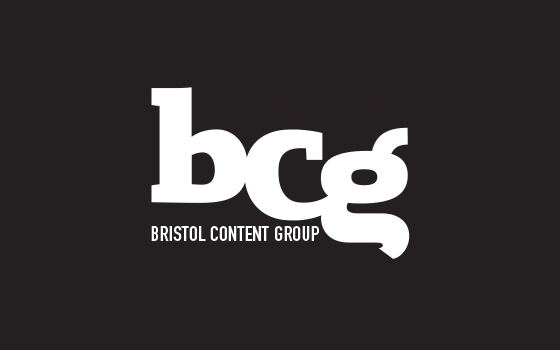Over the past several years, a disconcerting number of big-name print newspapers and magazines have folded (Gourmet–still tragic), reduced their frequency (The New Orleans Times-Picayune, The Christian Science Monitor) or gone 100% digital (Newsweek). And, while all the major players now have online editions, most are struggling with how to monetize their digital content in a way that doesn’t break the bank or alienate readers. At the same time, major publishing houses are merging in an effort to “deal with the challenges arising from the growth of electronic books and the power of Internet retailers.” Small publishing houses, meanwhile, are grappling with how to price books appropriately given ever-shrinking print runs, and many university presses are exploring digital-only releases of scholarly monographs whose projected sales can’t support the cost of print.
Given all of that, it’s easy to think of traditional print publishers as dinosaurs. Too big, too unwieldy, too slow, too elitist, too resource-hungry, too expensive. In short, closing in on a well-deserved Darwinian extinction.
(Side note: When I was in publishing, even my dad, who is quite possibly the biggest bibliophile this side of the Mississippi–his sprawling book collection has overtaken almost every room of my parents’ house–expressed concern about whether I would have a job in ten years. He is now obsessed with the Kindle.)
Needless to say, you rarely see content marketers and new media experts looking to print publishers for professional guidance–unless it’s in the form of cautionary tales.
But that’s a mistake.
While technological and economic shifts have forced print publishers to evolve or die, the accumulated wisdom of traditional publishing still has a lot to teach those of us who create content online.
Here are five lessons from the venerable halls of traditional publishing that deserve a place in all modern content strategies.
1. The production and publication of content should be strategic and intentional. Traditional print publishers don’t publish just anything because they can’t afford to do so. With so much budget at stake, every publishing decision is made by committee, and acquisitions editors, marketers, and production folks all get a say. (Hence, the slush pile of rejected manuscripts that plagues so many would-be authors.) But they also don’t want to publish just anything; they’re forced to be selective for economic reasons, but they’ve embraced this constraint by taking on the role of intellectual curators and cultural tastemakers. On the web, anyone can publish any old thing with very little effort–but that doesn’t mean they should. I’m not suggesting that each blog post or newsletter article your business produces ought to be vetted by committee, but I do think online content creators and marketers should try to recreate a false sense of scarcity. A healthy dose of critical selectivity can help you separate the wheat from the chaff (even in your own writing) and strengthen the overall quality of your site’s content. It can also help stave the urge to produce more and more content to feed the beast (faster, faster!) a mindset that leads very quickly to mediocrity.
2. You need an Editor-in-Chief. Remember the tragedy of the commons? Well, it applies to your content strategy, too. If it belongs to everyone, it belongs to no one. Someone needs to be in charge of your firm’s content program, from strategy and subject matter to assignments and scheduling. Unless your company is really big, you probably won’t have the luxury of being able to hire a dedicated Content Director or the like. That’s fine, but just be sure to give your designated editor-in-chief enough space, in terms of time and other responsibilities, to approach the role of content coordinator and strategist thoughtfully. (At Newfangled, Chris Butler acts as our extremely capable editor-in-chief while at the same time managing a whole slew of other responsibilities as COO. Not to brag, but he is also sort of superhuman.)
3. You need an editor. Even the best writers benefit from a second pair of eyes on their work. On a basic level, second-party editing reduces typos and grammatical errors, but a really good editor can do more than that–she can help tease out and clarify one’s thoughts and sharpen one’s writing. Most businesses aren’t going to run out and hire a copyeditor anytime soon (nor should they), but ideally someone on your staff–your editor-in-chief or someone else involved in content creation–can carve out the time to edit materials written by other staffers before publishing them to your website. (Of course, she will need another trusted soul to do the same for her.) For the sake of stylistic consistency, it helps to have the role of editor assigned to one person.
4. You need a style sheet. Speaking of stylistic consistency: style sheets, y’all. These helpful cheat sheets delineating house grammar and style rules go from being merely great to non-negotiable if a) your organization is large enough that many people from different departments will be contributing content to your website, b) you want your content to adhere to brand standards of any kind, c) your content will include a significant amount of industry-specific or technical terminology, or d) you enjoy consistency, clarity, and an overall feeling of security and wellbeing. (OK, fine–that last one should really be “if you are a card-carrying grammar nazi.”) In the aggregate, seemingly minor stylistic inconsistencies go on to subtly undermine the professionalism and even trustworthiness of your content. Style sheets help you avoid that problem, and they also make the editor’s job easier, since he won’t have to constantly make the same little corrections to everyone’s work.
5. Don’t forget to promote your work. Anyone who’s worked in book publishing knows how much hustle goes into the promotion of each title. Thankfully, promoting your work is infinitely easier online. Ideally, you’re already pulling in readers organically via SEO best practices, but don’t forget to spread the word about newly published content via social media, email digests, and online industry hangouts. Sounds like a no-brainer, but many of us could use the reminder now and again.
In conclusion: Long live Printosaurus Rex–and long live the web, too!

